Related Research Articles

Year 1135 (MCXXXV) was a common year starting on Tuesday of the Julian calendar.
Year 1142 (MCXLII) was a common year starting on Thursday of the Julian calendar.
The 1090s was a decade of the Julian Calendar which began on January 1, 1090, and ended on December 31, 1099.
The 1170s was a decade of the Julian Calendar which began on January 1, 1170, and ended on December 31, 1179.
The 1100s was a decade of the Julian Calendar which began on January 1, 1100, and ended on December 31, 1109.
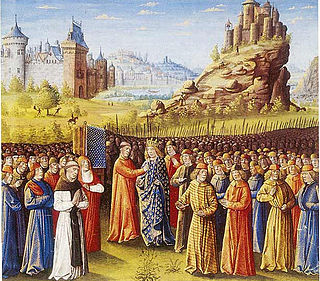
Year 1146 (MCXLVI) was a common year starting on Tuesday of the Julian calendar.
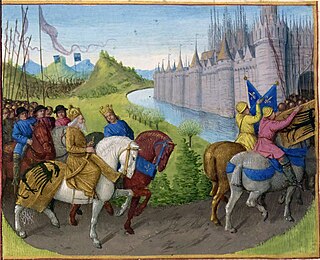
Year 1147 (MCXLVII) was a common year starting on Wednesday of the Julian calendar.

Year 1152 (MCLII) was a leap year starting on Tuesday of the Julian calendar.

Year 1187 (MCLXXXVII) was a common year starting on Thursday of the Julian calendar.
The 1110s was a decade of the Julian Calendar which began on January 1, 1110, and ended on December 31, 1119.

Year 1112 (MCXII) was a leap year starting on Monday of the Julian calendar.
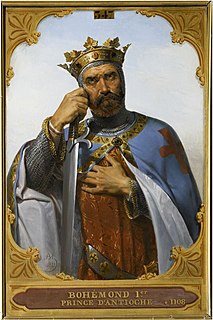
Year 1103 (MCIII) was a common year starting on Thursday of the Julian calendar.

Year 1176 (MCLXXVI) was a leap year starting on Thursday of the Julian calendar.
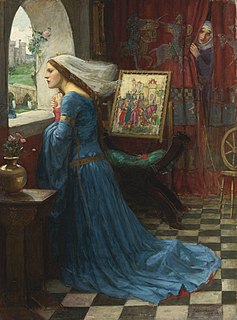
Year 1169 (MCLXIX) was a common year starting on Wednesday of the Julian calendar.
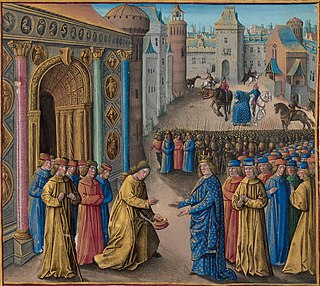
Year 1148 (MCXLVIII) was a leap year starting on Thursday of the Julian calendar.
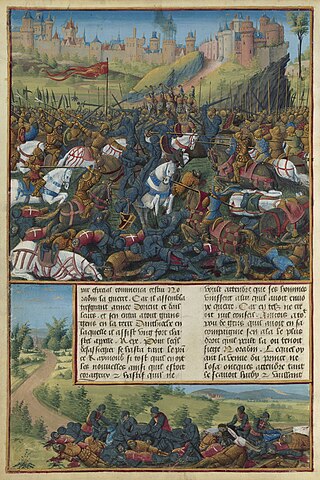
Year 1149 (MCXLIX) was a common year starting on Saturday of the Julian calendar.

Year 1104 (MCIV) was a leap year starting on Friday of the Julian calendar.

Year 1105 (MCV) was a common year starting on Sunday of the Julian calendar.

The Second Crusade (1147–1150) was the second major crusade launched from Europe. The Second Crusade was started in response to the fall of the County of Edessa in 1144 to the forces of Zengi. The county had been founded during the First Crusade (1096–1099) by King Baldwin I of Jerusalem in 1098. While it was the first Crusader state to be founded, it was also the first to fall.

The siege of Damascus took place between 24 and 28 July 1148, during the Second Crusade. It ended in a crusader defeat and led to the disintegration of the crusade. The two main Christian forces that marched to the Holy Land in response to Pope Eugene III and Bernard of Clairvaux's call for the Second Crusade were led by Louis VII of France and Conrad III of Germany. Both faced disastrous marches across Anatolia in the months that followed, with most of their armies being destroyed. The original focus of the crusade was Edessa (Urfa), but in Jerusalem, the preferred target of King Baldwin III and the Knights Templar was Damascus. At the Council of Acre, magnates from France, Germany, and the Kingdom of Jerusalem decided to divert the crusade to Damascus.
References
- ↑ David Nicolle (2009). Osprey: Campaign 204. The Second Crusade 1148: Disaster outside Damascus, p. 15. ISBN 978-184603-354-4.
- 1 2 Fletcher, R. A. (1987). "Reconquest and Crusade in Spain c. 1050-1150". Transactions of the Royal Historical Society. 5. 37: 31–47 [45]. JSTOR 3679149.
- ↑ Verbruggen, J. F. (1997) [1954]. The Art of Warfare in Western Europe During the Middle Ages: From the Eighth Century to 1340. Translated by Wilard, Sumner; Southern, R. W. (Second ed.). Woodbridge, UK: Boydell & Brewer. p. 129. ISBN 9780851155708.
- ↑ Bennett, Matthew (1998). The Hutchinson Dictionary of Ancient & Medieval Warfare. Chicago and London: Taylor & Francis. p. 192. ISBN 9781579581169.
- ↑ Yoshitake, Kenji (1988-06-01). "The arrest of the bishops in 1139 and its consequences". Journal of Medieval History. 14 (2): 97–114. doi:10.1016/0304-4181(88)90022-X. ISSN 0304-4181.
- ↑ Bauer, S. Wise (2013). The History of the Renaissance World: From the Rediscovery of Aristotle to the Conquest of Constantinople. New York: W. W. Norton & Company. p. 154. ISBN 9780393059762.
- ↑ Christie, Olav H. J.; Rácz, Anita; Elek, János; Héberger, Károly (2014). "Classification and unscrambling a class-inside-class situation by object target rotation: Hungarian silver coins of the Árpád Dynasty, ad 997–1301" (PDF). Journal of Chemometrics. 28 (4): 287–292. doi:10.1002/cem.2601. ISSN 1099-128X. S2CID 54977823.
- ↑ Ruud, Jay (2006). Encyclopedia of medieval Literature, Jay Ruud, 2006: Encyclopedia of medieval Literature. Facts on File Library of World Literature. New York: Facts on File. p. 355. ISBN 0-8160-5497-5.
- ↑ Brann, Ross (2006). Menocal, María Rosa; Scheindlin, Raymond P.; Sells, Michael (eds.). The Literature of Al-Andalus. Cambridge, UK and New York: Cambridge University Press. p. 273. ISBN 9780521030236.
For example, in four poems written in 1141 as the anxious pilgrim awaited favorable gusts to take him by ship from Alexandria to the coast of northern Palestine
- ↑ Goitein, Shelomo Dov (1959). "The Biography of Rabbi Judah Ha-Levi in the Light of the Cairo Geniza Documents". Proceedings of the American Academy for Jewish Research. 28: 41–56. doi:10.2307/3622446. ISSN 0065-6798. JSTOR 3622446.
- ↑ Biran, Michal (2005). The Empire of the Qara Khitai in Eurasian History: Between China and the Islamic World. Cambridge, UK and New York: Cambridge University Press. p. 110. ISBN 9780521842266.
- ↑ Sinor, D. (1999). "The Kitan and the Kara Khitay". In Asimov, Muchamed Sajfutdinovič; Bosworth, C. E. (eds.). History of Civilizations of Central Asia. Vol. IV: The Age of Achievement A.D. 750 to the End of the Fifteenth Century (Part One: The historical, social and economic setting). Delhi: Motilal Banarsidass Publishers Private Limited. p. 238. ISBN 9788120815957.
- ↑ Hamilton, Alastair (2016-01-01). "Prester John. The Legend and its Sources, written by Keagan Brewer (editor and translator)". Church History and Religious Culture. 96 (3): 379–380. doi:10.1163/18712428-09603008. ISSN 1871-2428.
- ↑ Patterson, Robert B. (2018). The Earl, the Kings, and the Chronicler: Robert Earl of Gloucester and the Reigns of Henry I and Stephen. Oxford and New York: Oxford University Press. ISBN 9780192518675.
- ↑ Heath, Ian (2016). Armies of Feudal Europe 1066-1300 (Second ed.). Cambridge, UK: Wargames Research Group. p. 117. ISBN 9781326686215.
- ↑ Painter, Sidney (January 1932). "The Rout of Winchester". Speculum. 7 (1): 70–75. doi:10.2307/2848323. ISSN 0038-7134. JSTOR 2848323. S2CID 162197175.
- ↑ Lancelott, Francis (1859). "Matilda of Bolougne, Queen of Stephen". The Queens of England and Their Times: From Matilda, Queen of William the Conqueror, to Adelaide, Queen of William the Fourth. Vol. I. New York: D. Appleton and Company. pp. 53–54.
- ↑ Annals of England: A Senior Class Date-Book of English History. The Royal School Series. London, Edinburgh and New York: T. Nelson and Sons. 1875. p. 17.
- ↑ Crouch, David (1988-01-01). "Earl William of Gloucester and the end of the Anarchy: new evidence relating to the honor of Eudo Dapifer". The English Historical Review. CIII (CCCCVI): 69–75. doi:10.1093/ehr/CIII.CCCCVI.69. ISSN 0013-8266.
- ↑ Gordon, Kim Hunter (2012). Breaking God's Flail: Chan Sculpture and the Death of a Great Khan in Song Dynasty Hechuan. Beijing: Kim Hunter Gordon. p. 15. ISBN 9787502256630.
- ↑ San, Tan Koon (2014). Dynastic China: An Elementary History. Petaling Jaya: The Other Press. p. 289. ISBN 9789839541885.
- ↑ Liu, Shi-Yee (January 2010). "Epitome of National Disgrace: A Painting Illuminating Song-Jin Diplomatic Relations". Metropolitan Museum Journal. 45: 55–82. doi:10.1086/met.45.41558052. ISSN 0077-8958. S2CID 155655394.
It was not until the autumn of 1141, after the Song army had scored a few significant victories, that the two states began negotiating a peace treaty, which was completed in October 1142. Although this Peace Treaty of the Shaoxing Era (Shaoxing heyi) ended the ravaging decade-long military conflict, the Song empire was degraded to a vassal state of the Jin in a hierarchical relationship defined as minister to ruler.
- ↑ Radspieler, T. (1955). The Ethnic German Refugee in Austria 1945 to 1954. The Hague, Netherlands: Springer Science & Business Media. p. 23. ISBN 9789401179102.
- ↑ Sigerus, Emil; Kiewe, Heinz Edgar (1977). Charted Peasant Designs from Saxon Transylvania. New York: Courier Corporation. p. 6. ISBN 9780486234250.
- ↑ Koranyi, James; Wittlinger, Ruth (2011-03-11). "From Diaspora to Diaspora: The Case of Transylvanian Saxons in Romania and Germany" (PDF). Nationalism and Ethnic Politics. 17 (1): 96–115. doi:10.1080/13537113.2011.550248. ISSN 1353-7113. S2CID 22425866.
Most academic literature on the topic suggests that the majority of early settlers colonized the area following a call by the Hungarian King Géza II (1141-1162) acting as “defenders” of Christianity and, later, of the Kingdom of Hungary.5
- ↑ Montanari, Stefano; Di Toma, Paolo; Lazzini, Arianna (2012). "Entrepreneurial strategies and corporate governance: experiences from the Italian wine industry". Corporate Board. 8: 44–60.
Our analysis is focused on the wine industry in Italy and analyzes the case of Barone Ricasoli Spa an estate owned by the family Ricasoli since 1141.
- ↑ Brincat, Ivan (3 February 2016). "Barone Ricasoli: A visit to the oldest winery in Italy and the one which created the Chianti Classico". Food and Wine Gazette. Retrieved 9 July 2019.
The first stones of Brolio Castle date back to the middle ages. The castle passed into the hands of the Ricasoli family thanks to an exchange of lands in 1141.
- ↑ Steven Runciman (1952). A History of The Crusades. Vol II: The Kingdom of Jerusalem, p. 179. ISBN 978-0-241-29876-3.
- ↑ Steven Runciman (1952). A History of The Crusades. Vol II: The Kingdom of Jerusalem, p. 179. ISBN 978-0-241-29876-3.
- ↑ Emmerson, Richard K. (2013). Key Figures in Medieval Europe, p. 320. ISBN 978-1-136-77518-5.
- ↑ Lucas Villegas-Aristizábal (2013), "Revisiting the Anglo-Norman Crusaders’ Failed Attempt to Conquer Lisbon c. 1142," Portuguese Studies 29:1 (2013), pp. 7-20.
- ↑ David Nicolle (2009). Osprey: Campaign 204. The Second Crusade 1148: Disaster outside Damascus, p. 15. ISBN 978-184603-354-4.
- ↑ Nicholson, Helen J. (2001). The Knights Hospitaller, p. 11. Woodbridge: Boydell & Brewer. ISBN 978-0-85115-845-7.
- ↑ Abulafia, David (1985). The Norman kingdom of Africa and the Norman expeditions to Majorca and the Muslim Mediterranean. Woodbridge: Boydell Press. ISBN 0-85115-416-6.
- ↑ Bresc, Henri (2003). "La Sicile et l'espace libyen au Moyen Age" [Sicily and the Libyan space in the Middle Ages](PDF) (in French). Retrieved 17 January 2012.
{{cite journal}}: Cite journal requires|journal=(help) - ↑ Steven Runciman (1952). A History of The Crusades. Vol II: The Kingdom of Jerusalem, pp. 180–181. ISBN 978-0-241-29876-3.
- ↑ Steven Runciman (1952). A History of The Crusades. Vol II: The Kingdom of Jerusalem, pp. 188–189. ISBN 978-0-241-29876-3.
- ↑ Meynier, Gilbert (2010). L'Algérie cœur du Maghreb classique: De l'ouverture islamo-arabe au repli (658-1518). Paris: La Découverte. p. 71.
- ↑ Picard C. (1997). La mer et les musulmans d'Occident au Moyen Age. Paris: Presses Universitaires de France.
- ↑ Bresc, Henri (2003). "La Sicile et l'espace libyen au Moyen Age" [Sicily and the Libyan space in the Middle Ages](PDF). Africa: Rivista trimestrale di studi e documentazione dell'Istituto italiano per l'Africa e l'Oriente (in French). 63 (2): 187–208. JSTOR 25734500.
- ↑ Steven Runciman (1952). A History of The Crusades. Vol II: The Kingdom of Jerusalem, p. 190. ISBN 978-0-241-29876-3.
- ↑ Steven Runciman (1952). A History of The Crusades. Vol II: The Kingdom of Jerusalem, pp. 190–191. ISBN 978-0-241-29876-3.
- ↑ Mallinus, Daniel. La Yougoslavie. Brussels: Éd. Artis-Historia, 1988. D/1988/0832/27, pp. 37–39.
- ↑ Picard, C. (1997). La mer et les musulmans d'Occident au Moyen Age. Paris: Presses Universitaires de France. p.76.
- ↑ Steven Runciman (1952). A History of The Crusades. Vol II: The Kingdom of Jerusalem, p. 192. ISBN 978-0-241-29876-3.
- ↑ Steven Runciman (1952). A History of The Crusades. Vol II: The Kingdom of Jerusalem, p. 193. ISBN 978-0-241-29876-3.
- 1 2 Meynier, Gilbert (2010). L'Algérie cœur du Maghreb classique. De l'ouverture islamo-arabe au repli (658-1518). Paris: La Découverte. p. 171. ISBN 978-2-7071-5231-2.
- ↑ Picard C. (1997) La mer et les musulmans d'Occident au Moyen Age. Paris: Presses Universitaires de France, pp.64
- ↑ Geography at about.com
- ↑ Picard C. (1997). La mer et les musulmans d'Occident au Moyen Age. Paris: Presses Universitaires de France.
- ↑ Abulafia, David (1985). The Norman kingdom of Africa and the Norman expeditions to Majorca and the Muslim Mediterranean. Woodbridge: Boydell Press. ISBN 0-85115-416-6.
- 1 2 Williams, John B. (1997). "The making of a crusade: the Genoese anti-Muslim attacks in Spain 1146-1148". Journal of Medieval History. 23 (1): 29–53. doi:10.1016/s0304-4181(96)00022-x.
- ↑ David Nicolle (2009). The Second Crusade 1148: Disaster outside Damascus, p. 37. ISBN 978-1-84603-354-4.
- ↑ Bresc, Henri (2003). "La Sicile et l'espace libyen au Moyen Age" [Sicily and the Libyan space in the Middle Ages](PDF) (in French). Retrieved 17 January 2012.
{{cite journal}}: Cite journal requires|journal=(help)[ permanent dead link ] - ↑ Chester Jordan, William (1997). The great famine: northern Europe in the early fourteenth century. Princeton: Princeton University Press. ISBN 0-691-05891-1.
- ↑ Steven Runciman (1952). A History of The Crusades. Vol II: The Kingdom of Jerusalem, pp. 211–212. ISBN 978-0-241-29876-3.
- ↑ Steven Runciman (1952). A History of The Crusades. Vol II: The Kingdom of Jerusalem, pp. 213–214. ISBN 978-0-241-29876-3.
- ↑ King John by Warren. Published by University of California Press in 1961. p. 67.
- ↑ Steven Runciman (1952). A History of The Crusades. Vol II: The Kingdom of Jerusalem, p. 210. ISBN 978-0-241-29876-3.
- ↑ Picard, Christophe (2000). Le Portugal musulman (VIIIe-XIIIe siècle. L'Occident d'al-Andalus sous domination islamique. Paris: Maisonneuve & Larose. p. 109. ISBN 2-7068-1398-9.
- ↑ Steven Runciman (1952). A History of The Crusades. Vol II: The Kingdom of Jerusalem, p. 217. ISBN 978-0-241-29876-3.
- ↑ David Nicolle (2009). The Second Crusade 1148: Disaster outside Damascus, p. 42. ISBN 978-1-84603-354-4.
- ↑ David Nicolle (2009). The Second Crusade 1148: Disaster outside Damascus, p. 46. ISBN 978-1-84603-354-4.
- ↑ David Nicolle (2009). The Second Crusade 1148: Disaster outside Damascus, p. 37. ISBN 978-1-84603-354-4.
- ↑ David Nicolle (2009). The Second Crusade 1148: Disaster outside Damascus, p. 46. ISBN 978-1-84603-354-4.
- ↑ Steven Runciman (1952). A History of The Crusades. Vol II: The Kingdom of Jerusalem, p. 220. ISBN 978-0-241-29876-3.
- ↑ David Nicolle (2009). The Second Crusade 1148: Disaster outside Damascus, p. 50. ISBN 978-1-84603-354-4.
- ↑ Christopher Tyerman (2006). God's War: A New History of the Crusades, p. 326. Penguin Books.
- ↑ Christiansen, Eric (1997). The Northern Crusades, p. 53. Penguin Books. ISBN 978-0-14-026653-5.
- ↑ Barraclough, Geoffrey (1984). The Origins of Modern Germany, p. 263. New York: W. W. Norton & Company. ISBN 0-393-30153-2.
- ↑ Rogers, Clifford J. (2010). The Oxford Encyclopedia of Medieval Warfare and Military Technology: Vol. 1, p. 36. Oxford University Press. ISBN 978-0195334036.
- ↑ David Nicolle (2009). The Second Crusade 1148: Disaster outside Damascus, p. 39. ISBN 978-1-84603-354-4.
- ↑ Steven Runciman (1952). A History of The Crusades. Vol II: The Kingdom of Jerusalem, pp. 195–196. ISBN 978-0-241-29876-3.
- ↑ Encyclopædia Britannica, Inc 2010. pp. 15–16. ISBN 978-1-59339-837-8.
- ↑ Bresc, Henri (2003). "La Sicile et l'espace libyen au Moyen Age" (PDF). Retrieved 2022-05-09.
- ↑ David Nicolle (2009). The Second Crusade 1148: Disaster outside Damascus, pp. 50–51. ISBN 978-1-84603-354-4.
- ↑ David Nicolle (2009). The Second Crusade 1148: Disaster outside Damascus, p. 51. ISBN 978-1-84603-354-4.
- ↑ David Nicolle (2009). The Second Crusade 1148: Disaster outside Damascus, p. 37. ISBN 978-1-84603-354-4.
- ↑ David Nicolle (2009). The Second Crusade 1148: Disaster outside Damascus, pp. 53–54. ISBN 978-1-84603-354-4.
- ↑ Steven Runciman (1952). A History of The Crusades. Vol II: The Kingdom of Jerusalem, p. 226. ISBN 978-0-241-29876-3.
- ↑ David Nicolle (2009). The Second Crusade 1148: Disaster outside Damascus, p. 54. ISBN 978-1-84603-354-4.
- ↑ Steven Runciman (1952). A History of The Crusades. Vol II: The Kingdom of Jerusalem, p. 227. ISBN 978-0-241-29876-3.
- ↑ David Nicolle (2009). The Second Crusade 1148: Disaster outside Damascus, p. 55. ISBN 978-1-84603-354-4.
- ↑ Steven Runciman (1952). A History of The Crusades. Vol II: The Kingdom of Jerusalem, p. 228. ISBN 978-0-241-29876-3.
- ↑ David Nicolle (2009). The Second Crusade 1148: Disaster outside Damascus, p. 56. ISBN 978-1-84603-354-4.
- ↑ David Nicolle (2009). The Second Crusade 1148: Disaster outside Damascus, p. 71. ISBN 978-1-84603-354-4.
- ↑ Baldwin, M. W. (1969). The First Hundred Years, p. 510. Madison, WI: University of Wisconsin Press.
- ↑ David Nicolle (2009). The Second Crusade 1148: Disaster outside Damascus, p. 83. ISBN 978-1-84603-354-4.
- ↑ Steven Runciman (1952). A History of The Crusades. Vol II: The Kingdom of Jerusalem, pp. 231–232. ISBN 978-0-241-29876-3.
- ↑ David Nicolle (2009). The Second Crusade 1148: Disaster outside Damascus, p. 16. ISBN 978-1-84603-354-4.
- ↑ Picard C. (1997). La mer et les musulmans d'Occident au Moyen Age. Paris: Presses Universitaires de France, p. 73.
- ↑ McGrank, Lawrence (1981). "Norman crusaders and the Catalan reconquest: Robert Burdet and the Principality of Tarragona 1129–55". Journal of Medieval History. 7 (1): 67–82. doi:10.1016/0304-4181(81)90036-1.
- ↑ David Nicolle (2009). The Second Crusade 1148: Disaster outside Damascus, p. 16. ISBN 978-1-84603-354-4.
- ↑ Chibnall, Marjorie (1991). The Empress Matilda: Queen Consort, Queen Mother and Lady of the English, p. 148. London, UK: Basil Blackwell. ISBN 978-0-631-15737-3.
- ↑ Jaques, Tony (2007). Dictionary of Battles and Sieges, p. 391. Greenwood Publishing Group. ISBN 978-0313-33538-9.
- ↑ Abulafia, David (1985). The Norman kingdom of Africa and the Norman expeditions to Majorca and the Muslim Mediterranean. Woodbridge: Boydell Press. ISBN 0-85115-416-6.
- ↑ Picard C. (1997). La mer et les musulmans d'Occident au Moyen Age. Paris: Presses Universitaires de France, p. 77.
- ↑ Norwich, John (1995). Byzantium: The Decline and Fall, pp. 98 and 103. Alfred A. Knopf, Inc. ISBN 0-679-41650-1.
- ↑ Steven Runciman (1952). A History of The Crusades. Vol II: The Kingdom of Jerusalem, p. 266. ISBN 978-0-241-29876-3.
- ↑ Steven Runciman (1952). A History of The Crusades. Vol II: The Kingdom of Jerusalem, p. 232. ISBN 978-0-241-29876-3.
- ↑ Steven Runciman (1952). A History of The Crusades. Vol II: The Kingdom of Jerusalem, p. 266. ISBN 978-0-241-29876-3.
- ↑ David Nicolle (2009). The Second Crusade 1148: Disaster outside Damascus, p. 83. ISBN 978-1-84603-354-4.
- ↑ McGrank, Lawrence (1981). "Norman crusaders and the Catalan reconquest: Robert Burdet and te principality of Tarragona 1129-55". Journal of Medieval History. 7 (1): 67–82. doi:10.1016/0304-4181(81)90036-1.
- ↑ Munro, John H. (2003). "The Medieval Origins of the Financial Revolution". The International History Review. 25 (3): 506–562. doi:10.1080/07075332.2003.9641005. S2CID 152336222.
- ↑ Norwich, John (2012). The Popes: A History. London: Vintage. ISBN 978-0-099-56587-1.